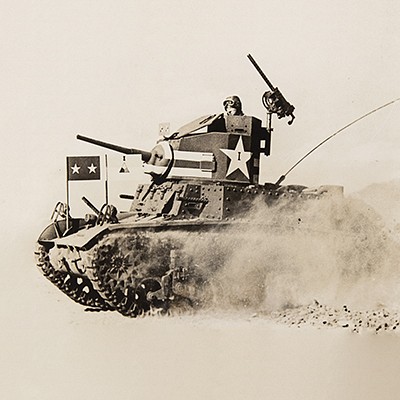Battle of Antietam: 30-Page Letter with Antietam Content
Two ways to bid:
- Leave a max absentee bid and the platform will bid on your behalf up to your maximum bid during the live auction.
- Bid live during the auction and your bids will be submitted real-time to the auctioneer.
Bid Increments
| Price | Bid Increment |
|---|---|
| $0 | $5 |
| $50 | $10 |
| $200 | $25 |
| $500 | $50 |
About Auction
May 18, 2023
RR Auction support@rrauction.com
- Lot Description
ALS signed “Augustus C. Golding,” fifteen pages both sides, 6 x 7.75, November 15, 1862. Writing to his "Friend Sturgis," Sergeant Golding provides a detailed summary of the movements of the 12th United States Infantry from March through November 1862. It presents a well-written narrative of regimental activities through McClellan's Peninsula Campaign, Pope's Virginia Campaign, and the Battle of Antietam. The lengthy letter begins, in small part: "On the fifth of March, our battalion marched from the barracks and went on board of the steamer John Potter which conveyed us to Amboy, there we took the cars and reached Camden about dark." He spends a bit of time tracing their travels, before reporting on a rebel attack: "The rebels heated us with a few shells from a large gun one of them passed over our camp and struck near where I was washing a shirt but they done no damage and the gun soon exploded and stopped their fun."
He goes on to mention marching to the White House, various skirmishes and battles with Confederate troops, and the capture of "the colors of a rebel regiment." On Sunday, September 14th, they "came in sight of the battle on South Mountain near enough to hear the artillery but not small arms," and crossed the mountain on Monday. Writing about Wednesday, September 17th—the Battle of Antietam—Sgt. Golding reports: "On Wednesday morning a fire of Artillery was opened that fairly shook the earth and continued most of the day. Porters Corps was stationed in the centre but made no advance their fire being entirely from artillery, our regiment lost one killed and a few wounded, after dark the Brigade Quarter Master sent out a wagon with a load of pork for our brigade, and I was with it, on the roads we met long rows of ambulances bringing in the wounded. The road was rough & stoney and their groans were enough to make one sick of war‰Û_On Friday I walked over a mile or two of the battle field our dead were chiefly buried here and there you could see a man dressed in blue, the rebels laid in heaps. There was a lane that was sunk about two feet below the level of the field, this was almost filled with dead and they lay in every direction they were swollen to twice their natural size and were black in the face and presented a disgusting sight. I see that some writers make a distinction between our men and the rebels in regard to their turning but I could see no difference, there was one grave marked with the name of Capt. Craig Motly, 10th Alabama Reg't (under this it said) 42 dead rebels in this hole. Arms laid around by the thousands. On Saturday the 20th our division encamped opposite the ford each regiment was on picket once in six days till we left. President Lincoln reviewed us here." In very good to fine condition. - Shipping Info
-
Bidder is liable for shipping and handling and providing accurate information as to shipping or delivery locations and arranging for such. RR Auction is unable to combine purchases from other auctions or affiliates into one package for shipping purposes. Lots won will be shipped in a commercially reasonable time after payment in good funds for the merchandise and the shipping fees are received or credit extended, except when third-party shipment occurs. Bidder agrees that service and handling charges related to shipping items which are not pre-paid may be charged to a credit card on file with RR Auction. Successful international Bidders shall provide written shipping instructions, including specified Customs declarations, to RR Auction for any lots to be delivered outside of the United States. NOTE: Declaration value shall be the item’(s) hammer price and RR Auction shall use the correct harmonized code for the lot. Domestic Bidders on lots designated for third-party shipment must designate the common carrier, accept risk of loss, and prepay shipping costs.
-
- Buyer's Premium



 EUR
EUR CAD
CAD AUD
AUD GBP
GBP MXN
MXN HKD
HKD CNY
CNY MYR
MYR SEK
SEK SGD
SGD CHF
CHF THB
THB















